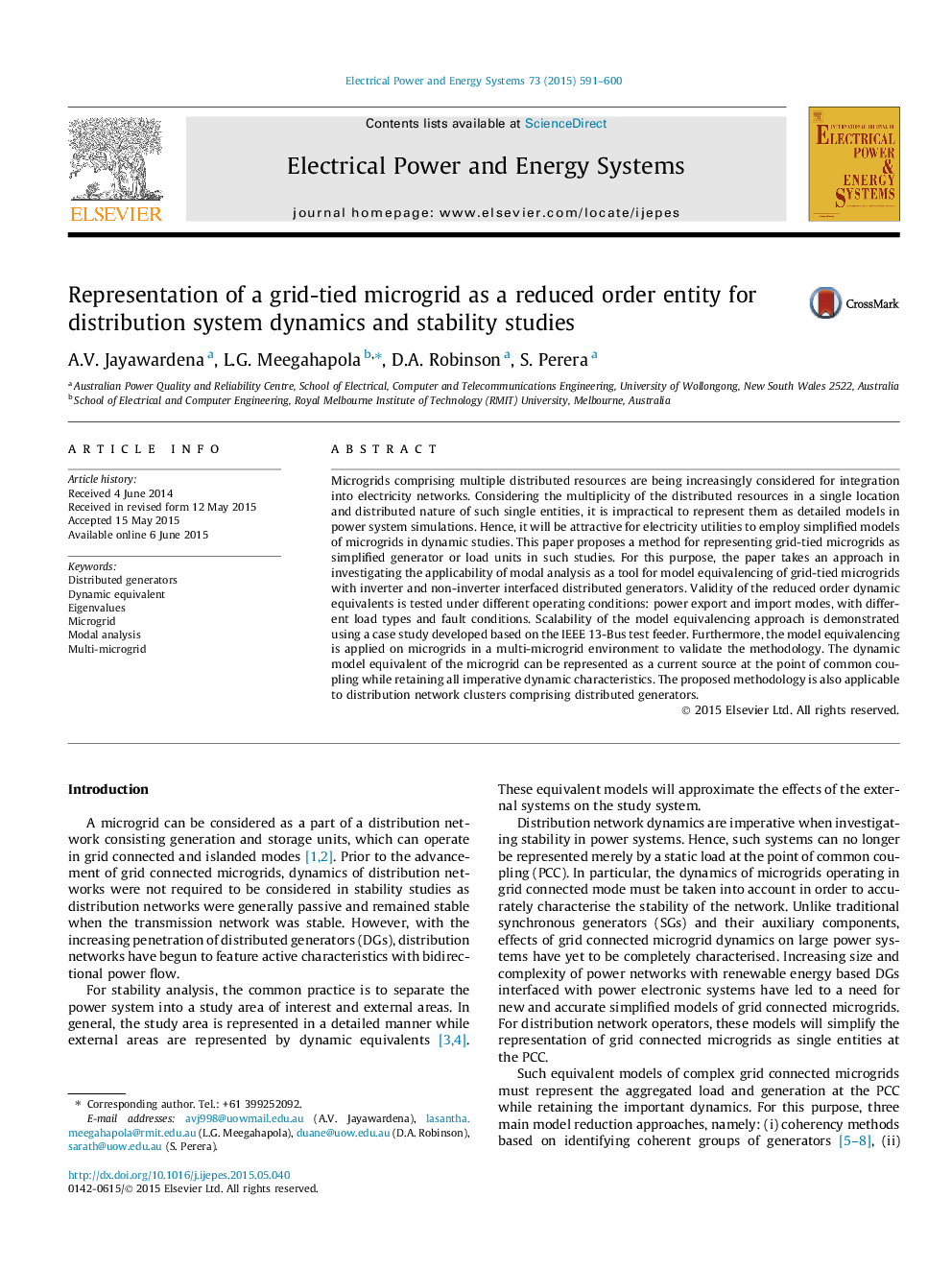| Article ID | Journal | Published Year | Pages | File Type |
|---|---|---|---|---|
| 399264 | International Journal of Electrical Power & Energy Systems | 2015 | 10 Pages |
•Presents a new method to represent grid-tied microgrids as single entities for power system studies.•Investigate the applicability of modal analysis on grid-tied microgrid model reduction.•An extra step is introduced to identify and group dominant modes for the equivalent microgrid model.•Derive equivalent models for two different grid-tied microgrid models.•Validated the reduced order dynamic equivalents under different network operating conditions.
Microgrids comprising multiple distributed resources are being increasingly considered for integration into electricity networks. Considering the multiplicity of the distributed resources in a single location and distributed nature of such single entities, it is impractical to represent them as detailed models in power system simulations. Hence, it will be attractive for electricity utilities to employ simplified models of microgrids in dynamic studies. This paper proposes a method for representing grid-tied microgrids as simplified generator or load units in such studies. For this purpose, the paper takes an approach in investigating the applicability of modal analysis as a tool for model equivalencing of grid-tied microgrids with inverter and non-inverter interfaced distributed generators. Validity of the reduced order dynamic equivalents is tested under different operating conditions: power export and import modes, with different load types and fault conditions. Scalability of the model equivalencing approach is demonstrated using a case study developed based on the IEEE 13-Bus test feeder. Furthermore, the model equivalencing is applied on microgrids in a multi-microgrid environment to validate the methodology. The dynamic model equivalent of the microgrid can be represented as a current source at the point of common coupling while retaining all imperative dynamic characteristics. The proposed methodology is also applicable to distribution network clusters comprising distributed generators.
